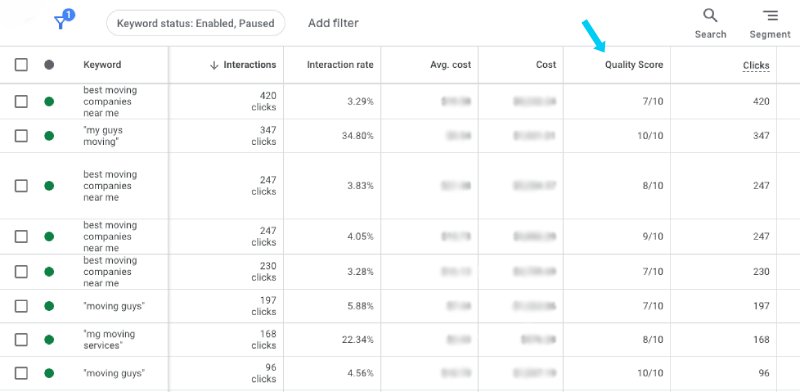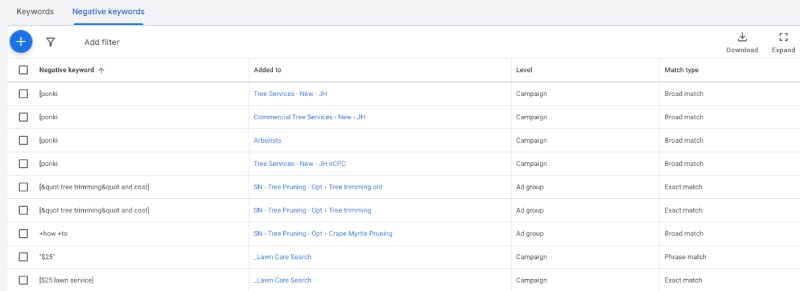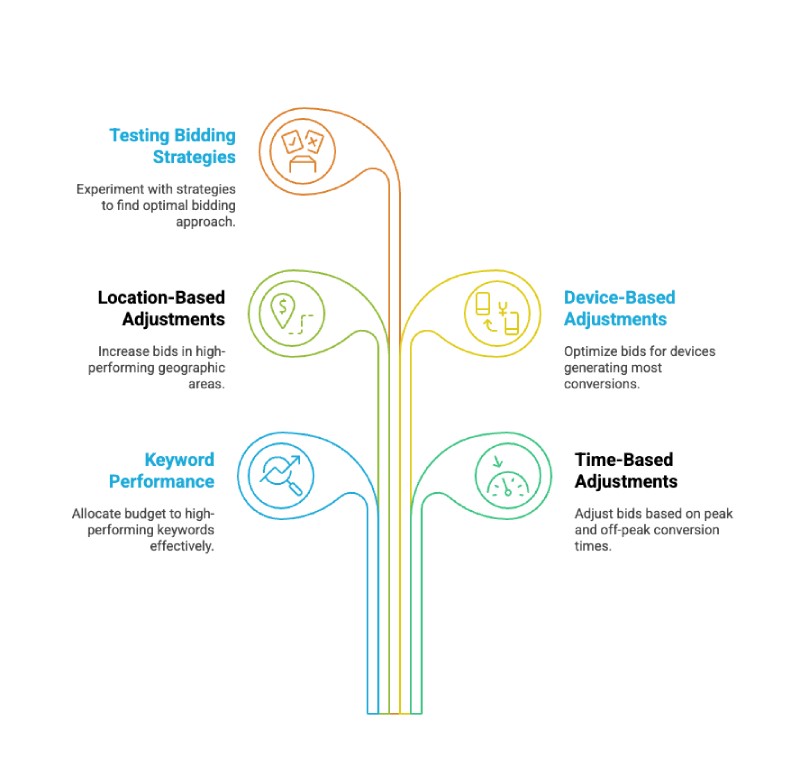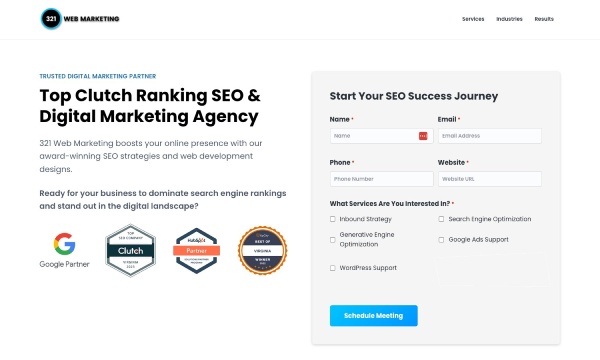If your business is struggling with high advertising costs but don’t want to lose conversions, you’re not alone. Many advertisers face the challenge of keeping their Cost-Per-Click or CPC down while maintaining strong results. With the right strategy, lowering CPC doesn’t have to mean sacrificing performance.
To help maximize ad spend, this guide breaks down proven strategies to refine your targeting, improve ad relevance, and optimize your bidding approach. Making small adjustments in ad copy, keyword selection, and audience segmentation can make a big impact and help attract quality traffic at a lower cost.
Optimize Ad Relevance For A Higher Quality Score
Going with a well-structured approach makes sure that ads align closely with user intent. Ads that closely match a user’s search intent tend to perform better, leading to a lower CPC and higher conversion rates.
Creating compelling ad copy that directly addresses user needs can improve engagement and click-through rates (CTR). To be effective, messaging should be straightforward, highlight important benefits, and match user intent. High-performing ads often feature strong calls to action and highlight fundamental differentiators that make an offer stand out.

Landing page experience is another important factor influencing Quality Score. If a user clicks on an ad and lands on a page that doesn’t match their expectations, they’re likely to leave without converting. A cohesive ad-to-landing-page experience reinforces relevance and encourages more user interaction.
For maximum impact, pages must be fast, mobile-optimized, and designed for easy conversions. The closer the alignment between ad content and landing page messaging, the better the user experience, which can contribute to a higher Quality Score and lower CPC.
Quality Score is directly tied to how Google ranks and prices ads, and when an ad earns a higher score, it means it’s more relevant and useful to users, which can lower costs. Improving this score involves refining ad copy, optimizing landing pages, and maintaining strong CTRs.
Long-tail keywords are also fundamental to this strategy. These highly specific search terms tend to have lower competition, reducing CPC while attracting users with higher intent. Targeting more precise keyword variations can improve ad placement and drive more valuable traffic.

Audience segmentation also influences ad performance and cost. Optimizing your ad reach through demographic insights, behavioral patterns, and user interests helps your messages connect with the right people.
Showing ads to the right people increases conversion potential and prevents wasted ad spend on unqualified traffic. Advertisers who take the time to define and segment their audience effectively often see better engagement and lower costs.
Optimize Targeting & Bidding Strategies
Targeting the right users at the right time plays a significant role in CPC management. One of the simplest ways to refine targeting is through negative keywords.

Ads perform better when irrelevant search terms are excluded, so that they appear only in high-intent searches. Regularly updating negative keyword lists keeps campaigns focused on that high-intent traffic, cutting down on those unnecessary clicks while also lowering your costs.
Bid strategy adjustments can also improve CPC efficiency. Lowering bids on underperforming keywords helps allocate budget toward higher-performing ones. Identifying when users are most likely to convert allows for bid adjustments based on time of day or day of the week. Many advertisers find success in reducing bids during off-peak hours when user intent may be lower.
 Using bid adjustments based on location and device can further refine ad spend. If a campaign performs significantly better in certain geographic areas, increasing bids in those locations can improve return on investment.
Using bid adjustments based on location and device can further refine ad spend. If a campaign performs significantly better in certain geographic areas, increasing bids in those locations can improve return on investment.
Similarly, understanding which devices generate the most conversions can help optimize bids for mobile or desktop traffic.
Testing different bidding strategies provides insight into what works best for a specific campaign.
Some advertisers find success with manual bidding, allowing them to control how much they pay per click on each keyword.
Others prefer automated strategies, such as maximizing conversions or setting a target cost-per-acquisition or CPA, which can help balance cost efficiency with performance goals. The trick here is engaging in continuous testing and refinement to find the most effective approach.
Ad placement also impacts CPC and performance. Higher ad positions often bring increased competition and costs, but they don’t always guarantee better results. Testing different placements can reveal whether a slightly lower position still delivers strong conversion rates at a reduced CPC.
Advertisers who experiment with placement and refine their approach based on data can often lower costs while maintaining strong visibility.
Continuous Optimization Through Testing & Data Analysis
Ongoing analysis drives a competitive CPC without sacrificing those essential conversions. Analyzing essential data points, including CPC, CTR, and conversion rates, offers important insights into how well a campaign is actually performing. Consistently monitoring these figures helps pinpoint opportunities for optimization to make your campaigns far more effective.


A/B testing different ad variations is one of the most effective ways to optimize their overall performance. Analyzing different variations of headlines, descriptions, and CTAs can uncover the most impactful messaging. The same applies to landing pages, as testing variations in design, messaging, or form fields can lead to higher conversion rates and improved ad relevance.
Regularly refining campaigns based on data is fundamental to your campaign’s long-term success. Carefully analyzing search term reports helps uncover new keyword opportunities and identify potential negative keywords that may be draining the budget.
Reviewing audience insights allows advertisers to adjust their targeting and improve campaign focus. Implementing small, data-driven adjustments that are made over time can significantly reduce CPC while maintaining or increasing conversions.
Successful advertisers recognize that CPC management is an ongoing process. A combination of strategic targeting, ad relevance improvements, and bid optimization leads to a more efficient campaign.
Making small, informed changes based on performance data helps cut down on any wasted spending and deliver real results. Factors such as testing, tracking, and refining continuously will keep campaigns highly competitive going forward.
Make The Most Of Your Ad Spend With 321 Web Marketing
Lowering your Cost-Per-Click while maintaining strong conversions requires adopting a strategic approach. Refining your ad’s relevance, optimizing landing pages, and adjusting current bidding strategies can all contribute to better performance while lowering costs. Regular testing and data-driven adjustments help keep campaigns efficient and competitive.
Having seasoned professionals on your side can lead to more effective outcomes. At 321 Web Marketing, we specialize in optimizing PPC campaigns to maximize results while keeping costs under control. Contact us today for a consultation and discover how our PPC consulting and marketing services can help you get the most out of your ad spend.

